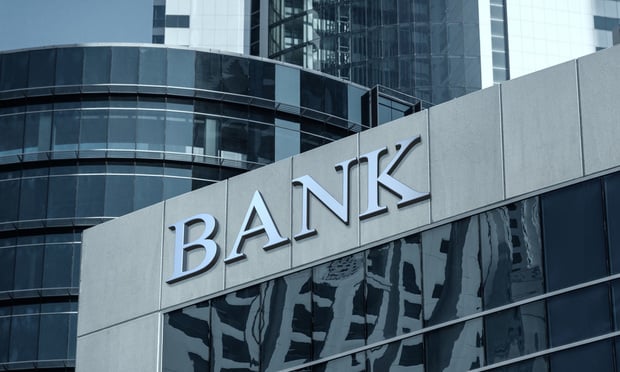WASHINGTON, DC–After a sluggish April, REITs rocked their performance in May, exceeding what the larger equity markets delivered.
NAREIT reports that the FTSE/NAREIT All REIT Index delivered a total return of 2.3% last month, while the S&P 500 Index rose by 1.8%. So far, REITs have been topping the S&P 500 this year, give or take a few months. As of May 31, the total return of the FTSE/NAREIT All REIT Index was 6.5%, compared with the 3.6% total return of the S&P 500 Index.
In an interview with GlobeSt.com last month, Brad Case, NAREIT's senior vice president of Research & Industry Information, said that April's performance — the FTSE/NAREIT All REIT Index fell 1.7% while the S&P 500 Index notched up by 0.4% — would likely reverse itself. “People are still trying to figure out if they want to cut back their exposure to stocks or not as they get further clarity on macroeconomic conditions and interest rates,” he said.
That ambivalence, however, is not necessarily reflective of REITs or commercial real estate but rather the roller coaster ride that the global markets have been on since the beginning of the year.
Strong Fundamentals for Remainder of the Year
There is much to like about REITs right now, starting with the industry's strong fundamentals. In that respect, the remainder of 2016 looks to be set. In a new report Fitch Ratings predicted that REITs' fundamentals will stay healthy for the next six months and cap rates will increase modestly, primarily for lower physical and/or market quality assets.
The outlook is optimistic for multifamily and office but less so for industrial. Retail, according to Fitch, will deliver more of a mixed bag.
These sectoral differences were actually the point of the report, which started out as an analysis of the relationship between key macro indicators such as gross domestic product and unemployment to annual changes in same store net operating income, or SSNOI.
One conclusion Fitch Ratings reached was the different asset classes had meaningful differences in their cycles.
Managing Director Steven Marks gave the example of multifamily same store net operating income growth, which is more volatile than retail with its one-year leases.
Fitch also concluded that macro indicators are strongly correlated over time with changes in SSNOI. Its SSNOI growth estimates for office and multifamily, for example, incorporate changing supply because supply appears to be relatively more strongly correlated to these sectors' SSNOI growth.
Capital Markets Volatility Cuts Both Ways
The sector faces challenges as well, as another Fitch Ratings report makes clear: namely, REITs have become more dependent on banks' unsecured revolving credit lines as the capital markets make life harder for everyone. The market volatility was such that lower-rated REITs have had to accept unfavorable pricing for new debt or stay out of the bond market all together, according to Marks.
But REITs are benefiting from the capital markets volatility at the same time — namely, investors are seeking them out as a haven from the turbulence, according to Than Merrill, an investment advisor and columnist with Seeking Alpha.
He writes:
If for no other reason than today's precarious equity environment, investors have sought refuge in dividend stocks, given their risk-averse strategies. “Right now we are in an environment where you have a higher risk aversion from investors,” says Jun Zhu, a research analyst and co-portfolio manager at the Leuthold Group. “That is good for dividend stocks,” and those investing in them.
WASHINGTON, DC–After a sluggish April, REITs rocked their performance in May, exceeding what the larger equity markets delivered.
NAREIT reports that the FTSE/NAREIT All REIT Index delivered a total return of 2.3% last month, while the S&P 500 Index rose by 1.8%. So far, REITs have been topping the S&P 500 this year, give or take a few months. As of May 31, the total return of the FTSE/NAREIT All REIT Index was 6.5%, compared with the 3.6% total return of the S&P 500 Index.
In an interview with GlobeSt.com last month, Brad Case, NAREIT's senior vice president of Research & Industry Information, said that April's performance — the FTSE/NAREIT All REIT Index fell 1.7% while the S&P 500 Index notched up by 0.4% — would likely reverse itself. “People are still trying to figure out if they want to cut back their exposure to stocks or not as they get further clarity on macroeconomic conditions and interest rates,” he said.
That ambivalence, however, is not necessarily reflective of REITs or commercial real estate but rather the roller coaster ride that the global markets have been on since the beginning of the year.
Strong Fundamentals for Remainder of the Year
There is much to like about REITs right now, starting with the industry's strong fundamentals. In that respect, the remainder of 2016 looks to be set. In a new report Fitch Ratings predicted that REITs' fundamentals will stay healthy for the next six months and cap rates will increase modestly, primarily for lower physical and/or market quality assets.
The outlook is optimistic for multifamily and office but less so for industrial. Retail, according to Fitch, will deliver more of a mixed bag.
These sectoral differences were actually the point of the report, which started out as an analysis of the relationship between key macro indicators such as gross domestic product and unemployment to annual changes in same store net operating income, or SSNOI.
One conclusion Fitch Ratings reached was the different asset classes had meaningful differences in their cycles.
Managing Director Steven Marks gave the example of multifamily same store net operating income growth, which is more volatile than retail with its one-year leases.
Fitch also concluded that macro indicators are strongly correlated over time with changes in SSNOI. Its SSNOI growth estimates for office and multifamily, for example, incorporate changing supply because supply appears to be relatively more strongly correlated to these sectors' SSNOI growth.
Capital Markets Volatility Cuts Both Ways
The sector faces challenges as well, as another Fitch Ratings report makes clear: namely, REITs have become more dependent on banks' unsecured revolving credit lines as the capital markets make life harder for everyone. The market volatility was such that lower-rated REITs have had to accept unfavorable pricing for new debt or stay out of the bond market all together, according to Marks.
But REITs are benefiting from the capital markets volatility at the same time — namely, investors are seeking them out as a haven from the turbulence, according to Than Merrill, an investment advisor and columnist with Seeking Alpha.
He writes:
If for no other reason than today's precarious equity environment, investors have sought refuge in dividend stocks, given their risk-averse strategies. “Right now we are in an environment where you have a higher risk aversion from investors,” says Jun Zhu, a research analyst and co-portfolio manager at the Leuthold Group. “That is good for dividend stocks,” and those investing in them.
Want to continue reading?
Become a Free ALM Digital Reader.
Once you are an ALM Digital Member, you’ll receive:
- Breaking commercial real estate news and analysis, on-site and via our newsletters and custom alerts
- Educational webcasts, white papers, and ebooks from industry thought leaders
- Critical coverage of the property casualty insurance and financial advisory markets on our other ALM sites, PropertyCasualty360 and ThinkAdvisor
Already have an account? Sign In Now
*May exclude premium content© 2024 ALM Global, LLC, All Rights Reserved. Request academic re-use from www.copyright.com. All other uses, submit a request to [email protected]. For more information visit Asset & Logo Licensing.









